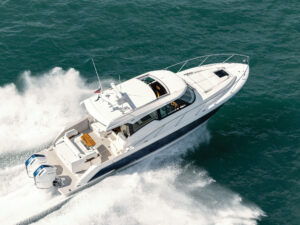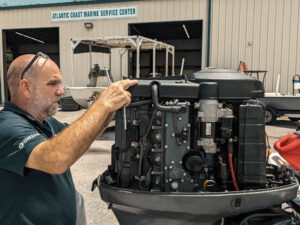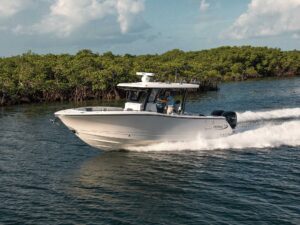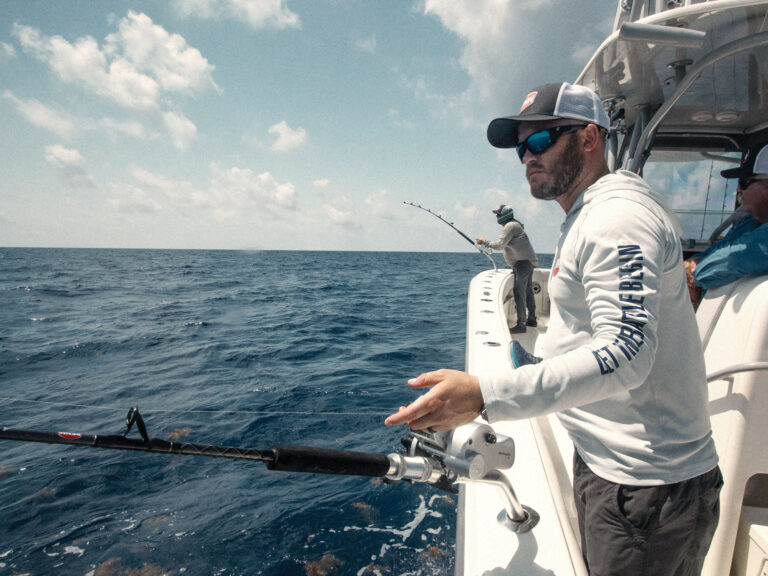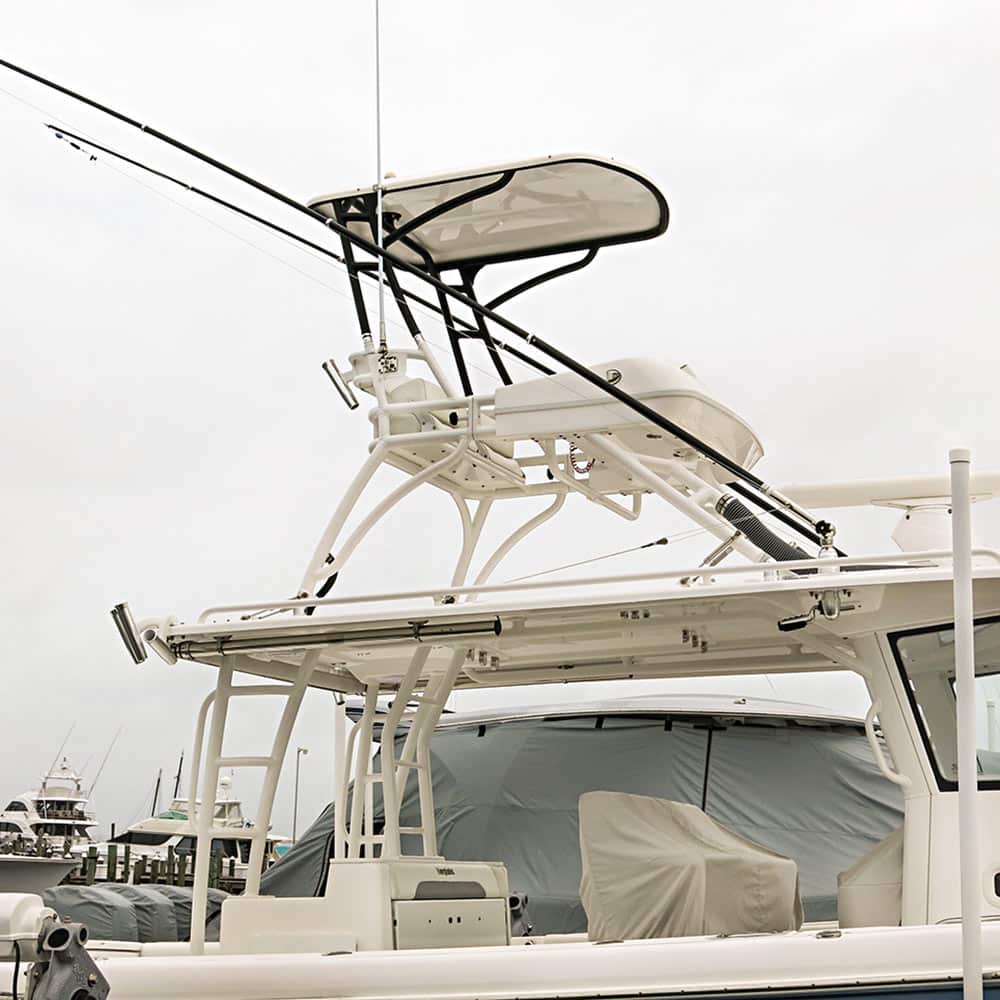
T-tops, towers, leaning posts, poling platforms and other elevated structures are commonplace on fishing boats nowadays, and while lightweight and long-lasting, marine-grade aluminum is prevalent in their fabrication; the intended purpose, desired looks and size restrictions greatly influence their design.
Boatbuilders’ factory options take much of the guesswork out of the equation, but aftermarket add-ons and custom retrofits do require special considerations.
Whatever metalworks enhancement you are planning, it’s essential to consider the length and beam of the boat, any possible clearance issues, and preferred fishing styles before settling on a specific design. Do you just want a spotting tower, or will you also need upper-station controls? Do you have to pass under a low bridge to get to the dock, requiring a hinged design? Is the boat large enough to carry the added topside weight safely? Answers to such questions, early in the process, save you time and money.
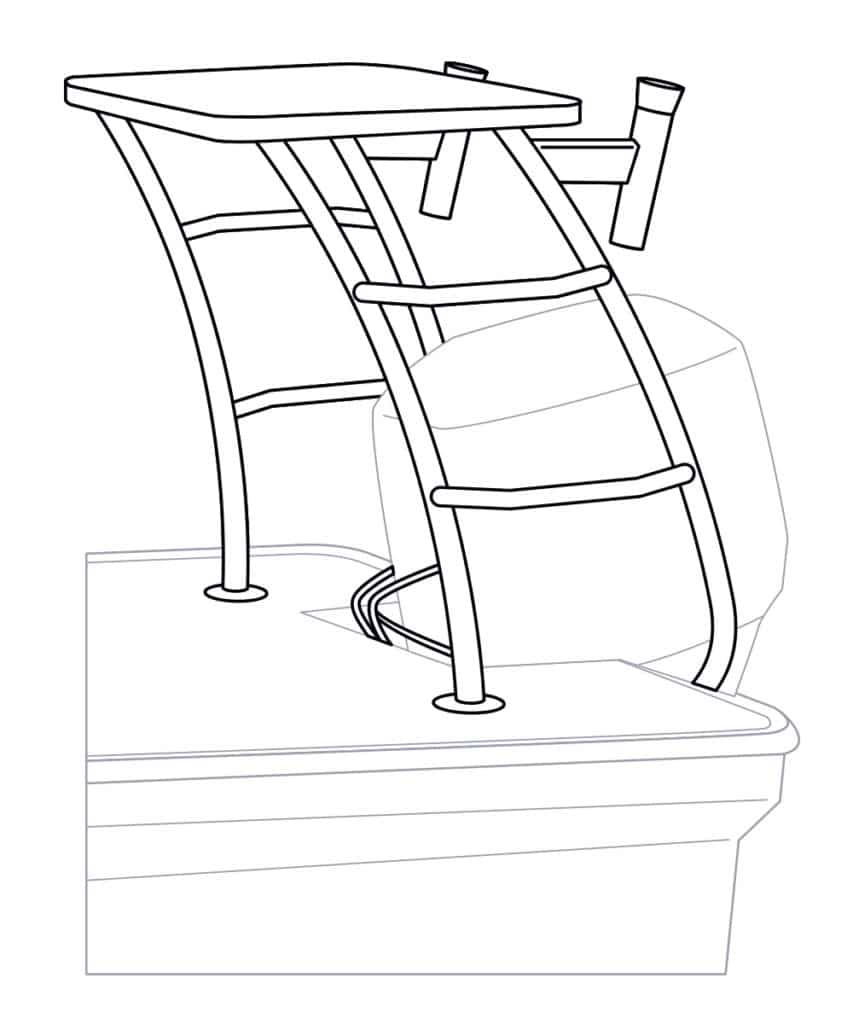
Roland Stanton, owner of Blue Coral Sport Fishing Towers in Pensacola, Florida, reviews different styles and options with his customers beforehand. “We use round and oval aluminum, and the main structure is 2-inch Schedule-40 pipe with ¼-inch-thick walls,” Stanton explains. “The kickers or supports are typically 1¼ to 1½ inches in diameter. Aluminum offers a high strength-to-weight ratio, plus it’s malleable and easy to bend. The joints or connections between the pipes are TIG-welded.”
Stanton says smaller towers or tops can have up to eight mounting points or anchors to the fiberglass. The higher the structure, the more anchors are needed to avoid twisting or flexing. Anchor points are through-bolted with backing plates, whenever possible. If access is blocked, the fiberglass is cleaned, roughed up and bedded with 5200 marine adhesive/sealant before sheet metal screws are employed.
Stainless-steel hardware is most commonly used as fasteners, but Stanton says anti-seize treatments are required whenever stainless is threaded into aluminum. “We use Tuff-Gel, and I’d recommend regularly treating all fasteners with something similar. Otherwise, the connections will lock up with saltwater corrosion and have to be replaced.”
Finishes are another important consideration when adding metal components. Most of Blue Coral Towers’ projects involve anodized aluminum, but the trend is shifting toward painted. The company uses Awlgrip or Imron acrylic paints to match boat-hull colors or accents. “Powder-coating is baked and it looks nice, but if it cracks, chips or needs repair, it has to be redone.
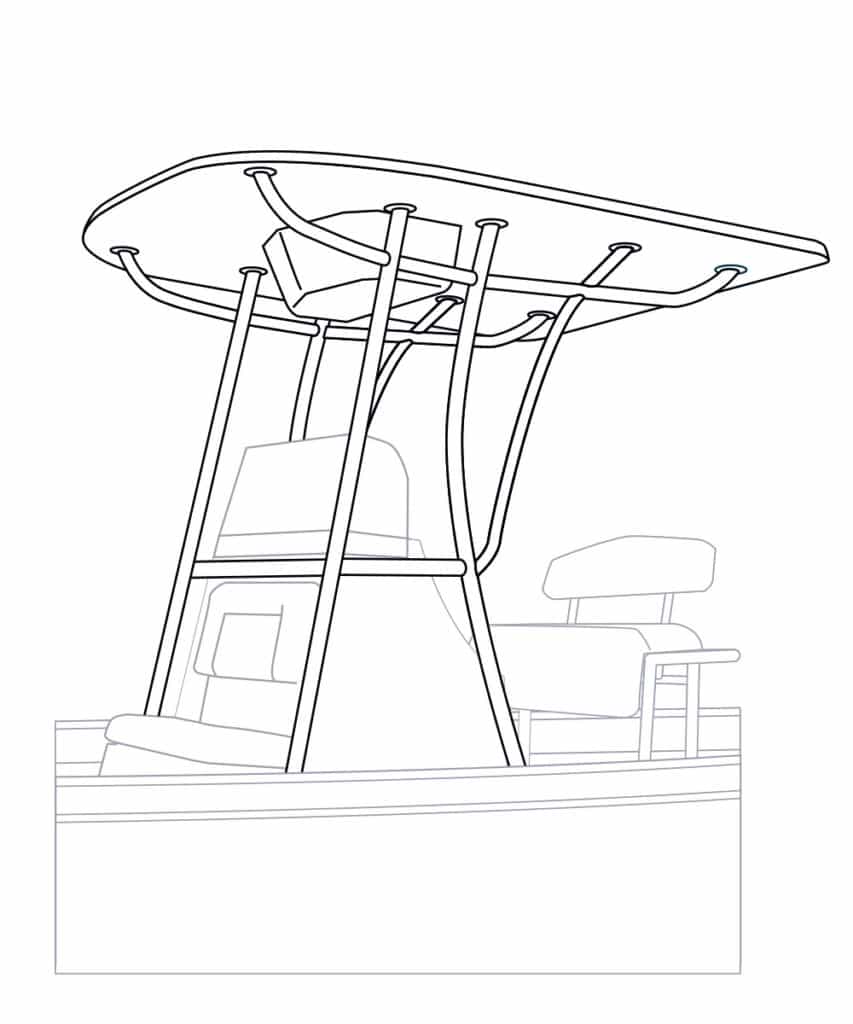
Anodized finishes last for years if you keep them clean and waxed, but more customers are going with painted finishes.”
Chad Semach, the chief design engineer at GG Schmitt, an OEM metalworks manufacturer based in Sarasota, Florida, and Lancaster, Pennsylvania, agrees that aesthetics are driving the latest trend in metal finishes toward painted or powder-coated. “We make a lot of anodized components, but we’re using a lot of different colors now,” he explains. “Buyers like matching the metalwork to the gelcoat on the underside of their hardtop or other contrasting accent colors. Anchor points into the console, rather than the deck, are popular now too. The shift is toward a more intricate design, where everything blends together. The trick is finding that middle ground between cluttered and sturdy.”
“Powder-coating is simply a matter of aesthetics,” Semach adds. “Except for the covered weld joints, it doesn’t resist corrosion any more than good anodized aluminum.” GG Schmitt also uses 6061-T6 marine-grade Schedule-40 round pipe for most builds, and D-shaped tubing exclusively for Scout Boats in a proprietary contract.
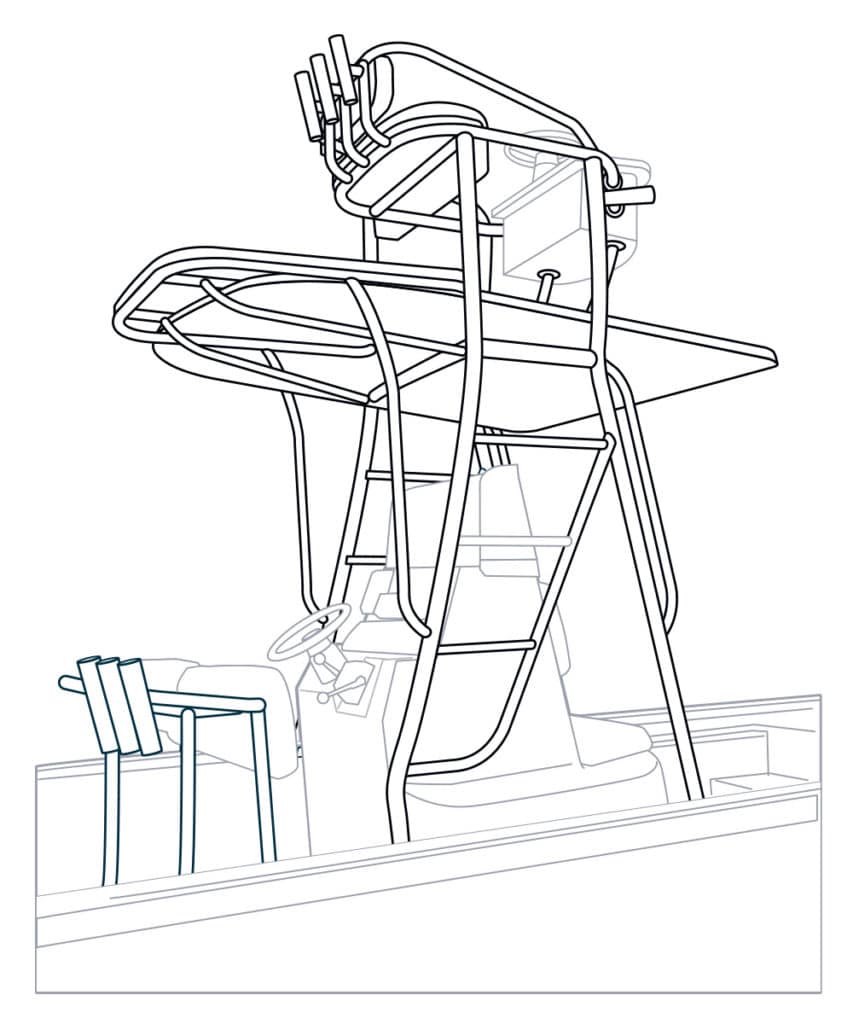
Regardless of finish or style, Stanton says the cost of metalwork continues to rise. He said raw-material costs have risen 15 percent over the last year. A basic T-top with a spotting tower without controls starts at $3,500 and goes up with more added features. The time it takes to complete a job depends on the season too. “We stay busy year-round, but we’re always slammed in the spring,” Stanton adds. “There’s a big rush during cobia season. After people get their tax-refund checks back, they want to splurge on a tower, so it helps to plan ahead.”
Well-designed metal options can provide shelter from the elements or a height advantage to spot both bait and fish. Take into account the various factors before a decision is made, and it’ll result in a boat enhancement that renders many years of service.

